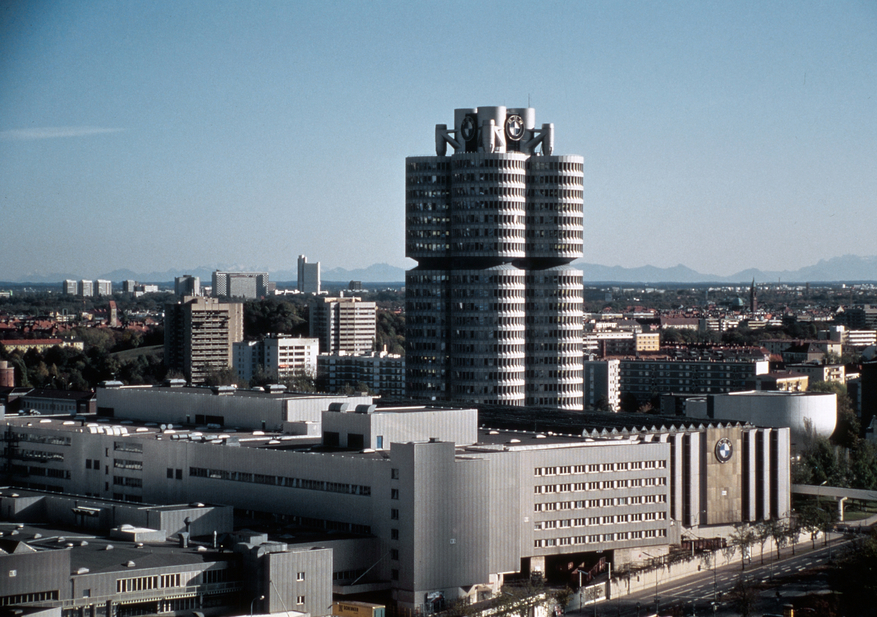|
Send this page to a friend! Fill in the form bellow | ||
news
BMW Looks Back on 40 Years of Its Four Cylinder Headquarters
The design is basically the same today as it was when it opened
BMW’s BMWGermany, 1918 > present87 models
BMWGermany, 1918 > present87 models
8471 photos
43 videos
famous four-cylinder headquarters, situated literally across the street from Munich’s Olympic Park, celebrated its 40th birthday on May 18 of this year. Since opening in 1973, it has become one of the icons of the Munich skyline.
Architect Karl Schwanzer’s meant to show BMW’s mission with its headquarters, hence the shape with four connected cylinders. At the time, BMW was still known as a maker of primarily four-cylinder cars and two-cylinder motorcycles, and the design fit that.
BMW’s original headquarters was in Plant 1 on the Munich factory grounds, but rapid expansion in the 60s meant that executives grew out of the building. BMW wanted a structure to communicate its growth but still be near the factory.
The first plans for the building were presented to the board in the summer of 1966 on 28,210 square meters of land next to the factory. At the time it was a parking lot for factory workers. The board did not like the original plans but took proposals from eight architecture firms for a building on the originally planned location. A stipulation of the design was that it had to be reconfigurable for future changes in technology, and it had to have architectural appeal so that BMW could promote the building. Schwanzer’s design was the clear winner.
Before BMW went fully into construction on the design, Schwanzer built a 1:1 scale model of an entire floor of the building at the Bavaria film studios.
The building covers 22 floors and is 99.5m, although the actual towers have 19 floors each. At the time, buildings in Munich were not allowed to exceed 100m. Each of the four cylinders are actually suspended from a cruciform beam at the top. During building, the central shaft was built first, and then each floor was added starting from the top and moving downward. There is a lattice of girders at the center over the top third of the building to absorb the load. Each tower was 16,800 tonnes.
Each floor of the tower was kept as a large, circular room that could be reconfigured as needed. Today, each one is mostly open so that workers can easily communicate.
The work went smoothly, except when it came to the BMW emblem on the roof. Munich’s city planners did not want the emblem there, and there was a law suit. For the 1972 Munich Olympics, the building was structurally complete, and instead BMW hung its logos on canvas screens. The city fined them 110,000 Marks. In the fall of 1973, BMW was finally given permission to display its logo at the top of its headquarters.
The building remained basically the same until 2004 when the interior was renovated with new insulation, sound deadening and windows. It also received new elevators and a new air conditioning system.
Encyclopedia |
Contribute
more about BMW



latest news










